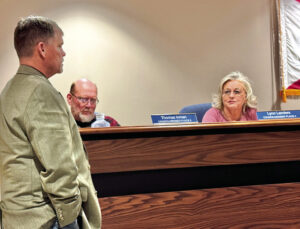Sign-up for hardwood restoration
By By James L. Cummins / special to The Star
April 9, 2004
Nowhere in America is there a greater variety of native plant communities, native plant species or rare and endemic native plants than in the forests of the Southeast.
However, this former vast forest type that was memorialized by Mark Twain and William Faulkner has been under stress. Much of these marginal and sub-marginal lands were cleared for agricultural production since 1950.
To aid in restoring this forest type and, at the same time ensure the future of the hardwood lumber market a continuous sign-up for hardwoods is now being offered by the U.S. Department of Agriculture (USDA) through the Conservation Reserve Program (CRP). This sign-up will also aid in decreasing the oversupply of pine pulp currently on the market.
The CRP is one of the landmark environmental steps in the 2002 Farm Bill. It is a voluntary program that offers financial incentives to landowners who have previously converted lands to crop or pasture land. Landowners who qualify are compensated for the value of their land in exchange for restoring these areas back to wildlife habitat. Land will be restored to bottomland hardwoods and shallow water areas for wildlife. The average rental payment for years 1 through 15 is approximately $60 per acre.
Landowners can also enroll these lands in a carbon sequestration program and offer their carbon reductions for sale. For more information on carbon sequestration and how to participate, go to The Carbon Fund's web site at www.thecarbonfund.org.
According to Dr. Jeff Clark, President of Wildlife Mississippi, "Three-fourths of the wetlands in the United States are controlled by private landowners. These remaining wetlands provide essential habitat for waterfowl and other wetland-dependent wildlife and if we are to ever increase their population, incentives such as CRP will not only enable landowners to develop waterfowl habitat, but the Natural Resources Conservation Service will help compensate them for removing their land from agricultural production."
The public benefits from both the reduced financial demand for disaster assistance and crop insurance funds on lands that experience repeated losses. They also benefit from significant long-term conservation benefits obtained from the protection of wildlife habitat. At the same time these restored lands create improved water quality, increased flood storage and reduced soil erosion..
It is expected that Mississippi, Louisiana and Arkansas will lead the nation in land enrolled in this program. The program is limited to 500,000 acres nationwide.
Landowners should contact their local office of the Farm Service Agency in their local U.S. Department of Agriculture Service Center for further information.
James L. Cummins is Executive Director of the Mississippi Fish and Wildlife Foundation in Stoneville, Mississippi. Known as "Wildlife Mississippi," the Foundation is a non- profit, conservation organization founded to conserve, restore and enhance fish, wildlife and plant resources throughout Mississippi. Their web site is www. wildlifemiss.org.







